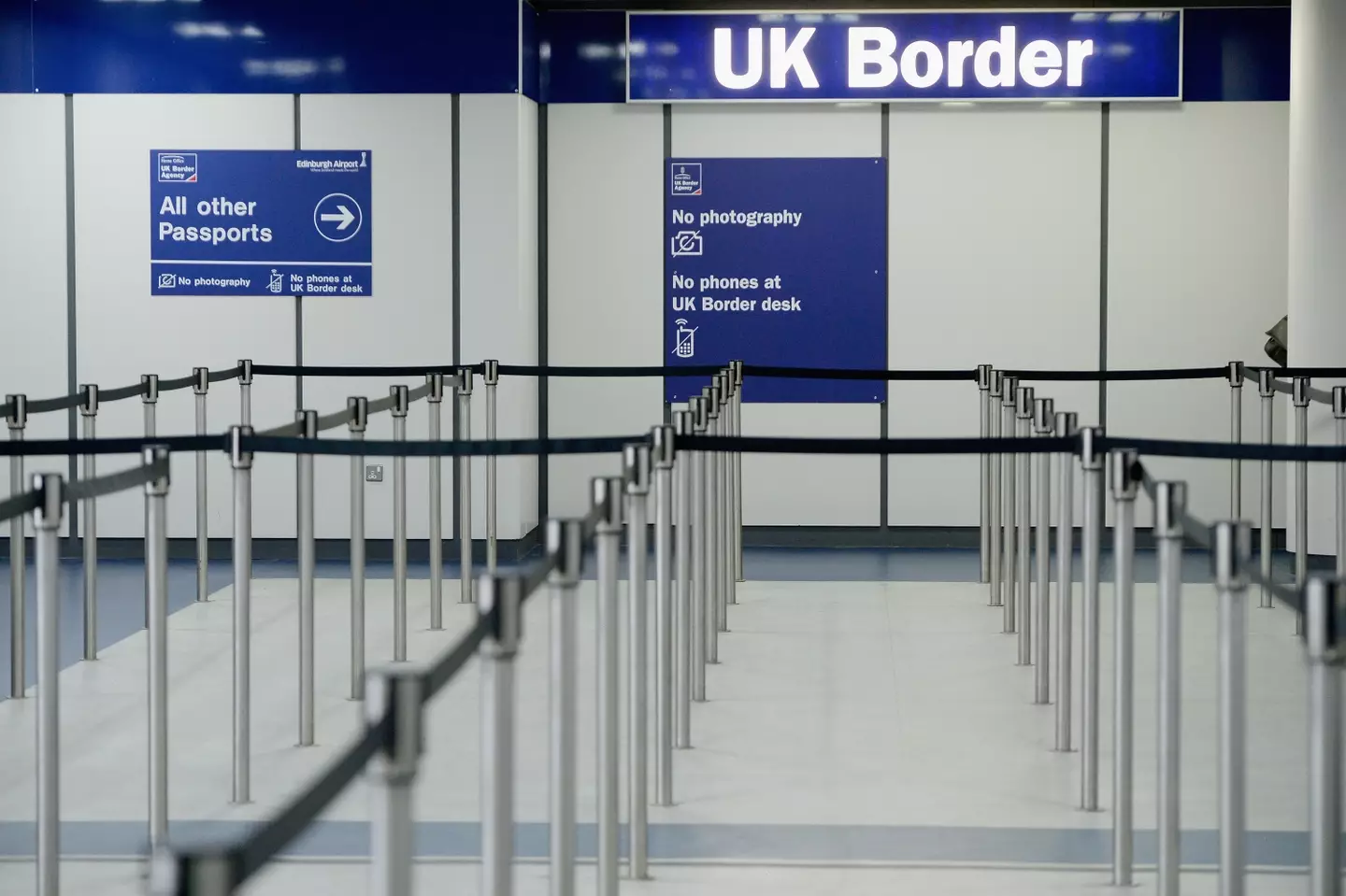Brits have been given a fresh warning ahead of holidays to the European Union with a brand new travel system set to be installed across the majority of Europe.
The system, dubbed the Entry/Exit System (EES), will be the European Union’s state-of-the-art approach to letting people in and out of the EU.
Currently, Brits get their passports stamped when they go in to or out of the EU. It’s happened since the UK left the EU back in 2016 when the country voted in favour of Brexit.
Passports are stamped any time you enter one of 29 European countries belonging to the EU’s Schengen Area; an area with an open, shared border.
Austria, Belgium, Bulgaria, Croatia, Czechia, Denmark, Estonia, Finland, France, Germany, Greece, Hungary, Iceland, Italy, Latvia, Liechtenstein, Lithuania, Luxembourg, Malta, Netherlands, Norway, Poland, Portugal, Romania, Slovakia, Slovenia, Spain, Sweden, and Switzerland make up the countries where Brits are checked when first entering or last exiting.
But stamping passports will soon be a thing of the past due to the EES.
The EU Entry/Exit System (EES)
Under the new system, Brits will be subjected to fingerprint scanners and getting our faces and retinas checked upon coming in or going out.
The purpose of this and the EES in general is to stop you from overstaying your legal welcome in the EU; something called the Schengen 90/180-Day Rule.
Under this, people who don’t own an EU passport can stay for up to 90 days within any 180 days – but not a day longer.
Break this rule and you could find yourself banned from the entire EU for a period of up to three years.
Now, a major update has been given on a mobile app expected to speed up queues when it came to registering for the EES.
Passport stamps will come to an end when entering or exiting the EU (Getty Stock Photo)
Mobile app’s availability ‘not clear’
Speaking in Parliament last week, John Keefe, chief corporate and public affairs officer of Eurotunnel parent Getlink, made a significant concession about the app’s avaliability – with the outcome not looking good for those jetting off to the EU once the EES goes live.
Speaking to the House of Lords Justice and Home Affairs Committee, Keefe said: “The possibility of enrolling data away from the point of entry has great value.
“[But] it’s not clear when the app will be available, [and] it’s being prepared for subsequent entry to the EU not first entry and enrolment in the system.
“It’s targeted at those already enrolled in the system.”
Effectively, those going in to the EU for the first time after the EES goes live will have to queue up and do it manually. It is only after that you can speed things up and process your trip on the app.

The EES has been delayed (Jeff J Mitchell/Getty Images)
Keefe added: “Initial enrolment will have to be done at a kiosk. Introduction of the app will speed up subsequent entry. But on first entrance you will have to register and that will be the case for some time.”
The EES has been delayed from its original 10 November enrolment date due to massive delays in making sure all the major EU countries had it in place.
Ylva Johansson, the commissioner for home affairs at the European Commission, said: “I hope we can start as soon as possible but there’s no new timeline so far. This also depends on the legal assessment that we will do and we’re working on it right now.”
Speaking to the Justice and Home Affairs Committee earlier this year, Lord Foster of Bath said the EES will bring about ‘serious delays for passengers’ in absence of a working app able to speed up the process.
Anton Radchenko, CEO of flight compensation firm AirAdvisor, also raised concern over the technology used to carry out these biological checks – known as eGates – being prone to outages.

